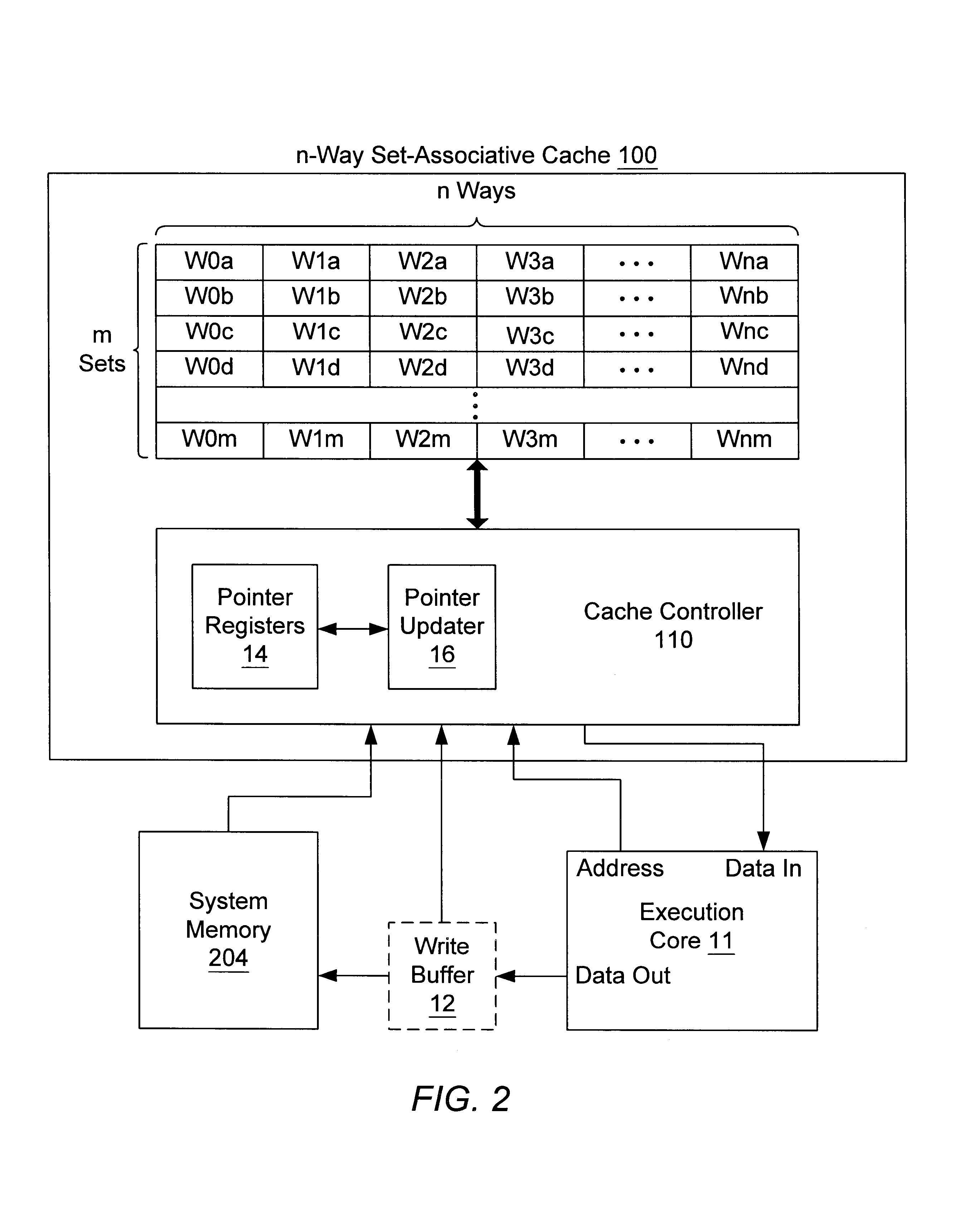Sectored least-recently-used cache replacement
a cache replacement and cache technology, applied in the field of caches, can solve the problems of not being able to access the data from a mass storage device in as many cycles as it takes to access the data from a mass storage devi
- Summary
- Abstract
- Description
- Claims
- Application Information
AI Technical Summary
Problems solved by technology
Method used
Image
Examples
Embodiment Construction
FIG. 1 shows a block diagram of one embodiment of a computer system 200 that includes a processor 10 coupled to a variety of system components through a bus bridge 202. Other embodiments of a computer system are possible and contemplated. In the depicted system, a main memory 204 is coupled to bus bridge 202 through a memory bus 206, and a graphics controller 208 is coupled to bus bridge 202 through an AGP bus 210. Several PCI devices 212A-212B are coupled to bus bridge 202 through a PCI bus 214. A secondary bus bridge 216 may also be provided to accommodate an electrical interface to one or more EISA or ISA devices 218 through an EISA / ISA bus 220. In this example, processor 10 is coupled to bus bridge 202 through a CPU bus 224 and to an optional L2 cache 228. In some embodiments, the processor 10 may include an integrated L1 cache (not shown).
Bus bridge 202 provides an interface between processor 10, main memory 204, graphics controller 208, and devices attached to PCI bus 214. Whe...
PUM
 Login to View More
Login to View More Abstract
Description
Claims
Application Information
 Login to View More
Login to View More - R&D
- Intellectual Property
- Life Sciences
- Materials
- Tech Scout
- Unparalleled Data Quality
- Higher Quality Content
- 60% Fewer Hallucinations
Browse by: Latest US Patents, China's latest patents, Technical Efficacy Thesaurus, Application Domain, Technology Topic, Popular Technical Reports.
© 2025 PatSnap. All rights reserved.Legal|Privacy policy|Modern Slavery Act Transparency Statement|Sitemap|About US| Contact US: help@patsnap.com



